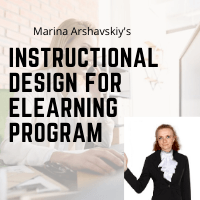The Value Propositions
Understanding how to build engaging eLearning courses is vital to your success. In short, remote learners are looking for courses to help them understand, retain, and use the knowledge they learn. But they also want to enjoy the time they spend on the learning platform. For IDs, delivering such value lies in producing courses that meet learner expectations.

As an ID, the interactions you deliver through your eLearning courses must provide learners with the value they seek. Failure to do so will likely result in learner disengagement and, potentially, negative feedback on social media and other online platforms.
The best way to offer value to your online learners, therefore, is by building exciting and technically sound eLearning courses. And to do so, you need to equip yourself with the knowledge and skills required to produce engaging and result-oriented eLearning courses.
Essential ID Knowledge And Skills
As with any science to excel in its practice, aspiring and practicing Instructional Designers must arm themselves with the essential knowledge and skills of the trade. These skills and the underlying knowledge will help turn the science into an art form.
Understand The Basics
To go far in the ID world, it’s important to have a firm understanding of the roots of your chosen profession. Knowing how the science of eLearning course design and development evolved into what it is today will add perspective to the content you’ll be designing for your audience.
Instructional Design basics include a sound understanding of various design methods, theories, and styles. As you move through your career as an ID, you’ll likely take on projects of varying degrees of complexity. This basic knowledge will prove extremely useful to develop a range of content and courses that meet the needs of a wide array of audiences.
Master The Foundations
The foundation of any eLearning course, or any Instructional Design endeavor for that matter, lies in strong analysis. Practitioners and students must, therefore, master the art of data collection and needs analysis. Part of building that foundation includes gaining a firm understanding of the psychology behind ID, such as Gagne’s Nine Events of Instruction and Bloom's Taxonomy, and how to create impactful learning objectives using those theories.
It’s also important to have other more practical foundational skills, including creating course design documents, having firm command of various Instructional Design methods, and using helpful aids, such as Storyboarding, to produce course outlines.
Building On The Foundation
Once you master the foundational aspects of ISD, it’s important to build upon those foundations. Learning about, and indeed mastering, some additional but more advanced elements, such as Scripting, Quality Assurance, and 508 Compliance, might accomplish this objective.
It’s essential for IDs to also build skills to inject stimulation and excitement into their courses. These include adding interactivity, using games and virtual realities to teach, and offering multimedia content (audio, video, graphics) to keep online learners engaged. Wrapping all these skills into a well-knit implementation plan will help keep your projects on track and on budget—two elements that make developing eLearning courses commercially viable.
Taking Your Skills To The Next Level
No ID will have all the skills and knowledge to “do it alone.” And that’s why it’s vital to know how to work with Subject Matter Experts (SMEs) when building eLearning courses. And while a realistic implementation plan is important, a firm grasp of eLearning Project Management methodologies is equally essential to move your design and development skills to the next level.
Your repertoire of skills must also include knowledge of the tools of the trade, such as course authoring software and Learning Management Systems (LMSs). Additionally, to protect the investment you’ve made in developing the course, you must have intimate knowledge of copyright laws, including how—and under what circumstances—you might make legal use of 3rd-party copyrighted materials.
What The Future Holds
The future is evolving and the theory and practice of Instructional Design are no exception. Learning sciences, psychology, neuroscience, social science, experience design, data sciences, information technology, and developments in the mobile delivery of learning content continually collaborate to redefine how learners engage with their learning environments. This new knowledge helps develop new learning approaches.
Having a firm grounding of the existing ID framework, for instance, helps course designers and developers explore the application of newer and evolving methodologies. For example, designers are increasingly finding that the ADDIE (Analysis, Design, Development, Implementation, and Evaluation) approach doesn’t work in some “new world” situations. Newer models, such as test-driven Agile methodology, therefore, evolved to facilitate rapid design, development, testing, and rollout of eLearning courses.
Future developments in Instructional Design are inevitable, but they evolve as a result of limitations or restrictions in predecessor approaches. To build that future, therefore, requires an understanding of existing (i.e., the predecessor) ID principles and theories. It is through that knowledge that designers recognize gaps and/or flaws and identify new approaches that take ID to the future.
Taking ID To The Next Level
As you can appreciate, doing Instructional Design right is both an art and a science. To perform as an eLearning ID artist, it’s imperative that you grasp the scientific principles that underpin the art. Without that knowledge to guide you, your efforts could potentially result in creating less than optimal training content that might not deliver their stated objectives.
It matters not whether you are an aspiring Instructional Designer, someone just starting out in an ID career, or if you are already an Instructional Designer and need to hone your skills in specific aspects of eLearning course design. To take your ID efforts to the next level, you must create engaging, results-oriented eLearning courses that people love and want to finish, without the over-exploding overwhelm, tech hang-ups, and terrifying "what-do-I-do-next syndrome"!
And, if you want to do ID right, you must invest time and effort learning the art and the science of Instructional Design for eLearning. Enrolling in a good Instructional Design program with an eLearning focus is a good start.
Here’s some great news for eLearning Industry members and readers wishing to jumpstart or upskill their eLearning course development skills. For a limited period, you’ll receive 30% off Marina Arshavskiy’s Instructional Design for eLearning Program. The program includes 4 courses, plus a comprehensive library of workbooks, worksheets, and templates to help you develop the skills to build truly irresistible eLearning courses. Just use this discount code: elearningindustry30









